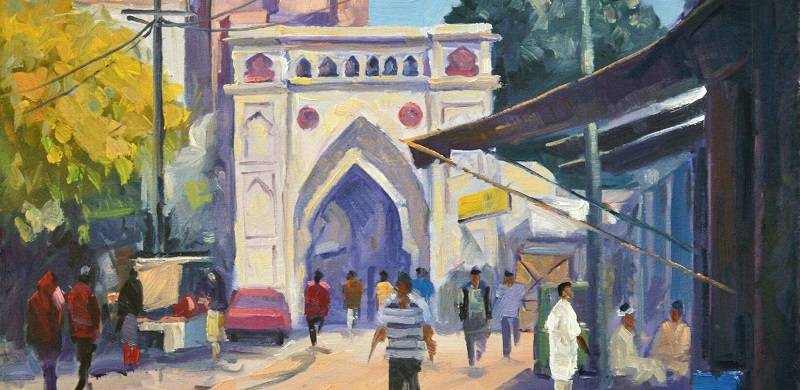
Lahore is known for its history and culture – and Bhati gate is listed on top when it comes to cultural attractions in Lahore. Bhati gate, built in the 16th century, is one of 16 gates which were demolished during the British era. This gate open doors to history, culture, colours, lifestyle, tradition, food and taste. Bhati gate is one of the two oldest entry points into the Walled City, which controlled the only major north-south thoroughfare during the Ghaznavid period. It opens to Hakiman Bazaar and is situated close to the Fakir Khana Museum. Close to the entryway is additionally found the Old City's Oonchi Mosque.
The door is named after the Bhati faction of the Rajputs. It is situated close to Data Darbar and is notable for its food. Consistently, particularly on Thursdays, musicians perform Qawali music, followed by Naats and religious sermons. Tourists tend to stop by here when visiting Data Darbar and the Minar-e-Pakistan, to see the rich culture and history of the gate.
Numerous celebrated artists, journalists, craftsmen, political figures and witty people have dwelled here. Moreover, this gate is a hub of literature and arts of the Walled City of Lahore. In 1901, Sir Abdul Qadir published his inspiring literature in the form of a magazine from the area of Bhati Gate. Significantly, the poet of the East, Allama Iqbal, also lived at Bhati Gate.
Oonchi Masjid is found inside the Bhati entryway which was traced all the way back to Emperor Akbar's era. The popular Koocha of Bhati Gate called Moti Tibba is inside the door. A private museum named the Fakir Khana is likewise an essential site at the Bhati entryway. Little Hindu shrines are additionally situated inside the Bhati door – making it also a living symbol of interfaith harmony and pluralism.
Bhati Gate holds treasures of the physical and intangible culture alike in Lahore. It is a vital spot for the visitor who hopes to get better acquainted with the historic city of Lahore.
The door is named after the Bhati faction of the Rajputs. It is situated close to Data Darbar and is notable for its food. Consistently, particularly on Thursdays, musicians perform Qawali music, followed by Naats and religious sermons. Tourists tend to stop by here when visiting Data Darbar and the Minar-e-Pakistan, to see the rich culture and history of the gate.
Numerous celebrated artists, journalists, craftsmen, political figures and witty people have dwelled here. Moreover, this gate is a hub of literature and arts of the Walled City of Lahore. In 1901, Sir Abdul Qadir published his inspiring literature in the form of a magazine from the area of Bhati Gate. Significantly, the poet of the East, Allama Iqbal, also lived at Bhati Gate.
Oonchi Masjid is found inside the Bhati entryway which was traced all the way back to Emperor Akbar's era. The popular Koocha of Bhati Gate called Moti Tibba is inside the door. A private museum named the Fakir Khana is likewise an essential site at the Bhati entryway. Little Hindu shrines are additionally situated inside the Bhati door – making it also a living symbol of interfaith harmony and pluralism.
Bhati Gate holds treasures of the physical and intangible culture alike in Lahore. It is a vital spot for the visitor who hopes to get better acquainted with the historic city of Lahore.
